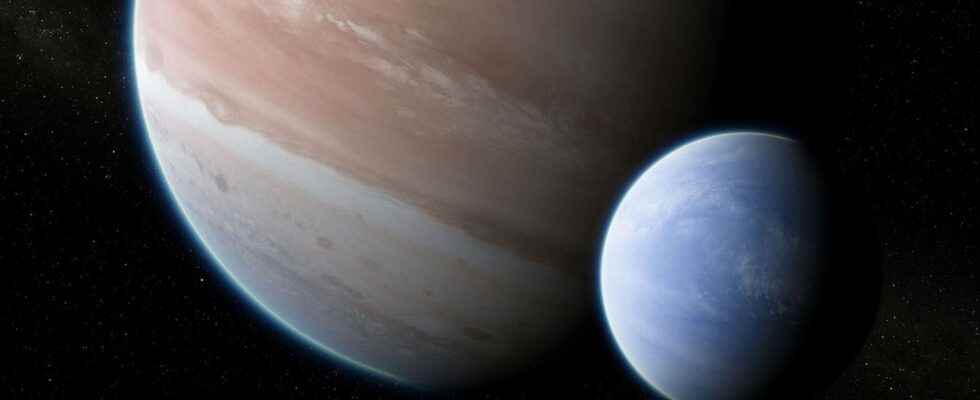A team of astronomers believe they have unearthed a superlune orbiting an exoplanet the size of Jupiter, in a star system located more than 5,000 light years from ours. If the discovery is confirmed, it could imply that the presence of exolunes is a common feature in planetary systems.
You will also be interested
[EN VIDÉO] Direct observation of the formation of an exolune The giant Alma radio telescope made the first direct image of a moon forming around a very young giant planet.
Despite the discovery of more than 10,000 candidates ofexoplanets, the observation of exolunes is very rare: yet this is the challenge that a team ofastronomers from Cool World Labs of the University columbia in New York which, after deferring a first candidate fromexomoon in 2017, thinks to have again detected an exolune in a planetary system with more than 5,000 light years of us, in the direction of constellation of the Swan and the Lyre. This new exolune, orbiting Kepler-1708b, a exoplanet the size of Jupiter, would have a size comparable to that of two thirds of our Neptune. The first exolune detected by the team, the size of Neptune, orbiting Kepler-1625b, an exoplanet comparable to Kepler-1708b.
Gas exolunes captured by more massive exoplanets?
According to the team of astronomers, the two newly discovered superlunes are likely to be mainly composed of gas, just like Neptune. If their hypothesis is correct, these moons could in fact have started their life as planets which, after having accreted a certain amount of matter, would have been captured by the gravitational pull of more massive planets. The great distance between Kepler-1708b and Kepler-1625b from their stars respective ones confirms them in their idea, the gravitational attraction exerted by the planets on their exolunes probably dominating on that exerted by their stars.
It is also around this type ofexoplanets – resembling Jupiter or Saturn, and with fairly wide orbits – that the team of astronomers concentrate in their hunt for the exolune: if we trust what we know in our Solar system (Jupiter and Saturn have more than a hundred moons around them), it is around these planets that exolunes are most likely to hide.
A pending confirmation
This is using the method of transits that the team of astronomers detected the exolune, in the same way as for the detection of the exoplanet around which it orbits: when the brightness measured from the star decreases periodically, we associate the phenomenon with the passage of an exoplanet in front of the star. But these variations are generally weak and difficult to detect in the case of an exoplanet, making them even smaller in the case of an exolune.
As a result, the existence of these exolunes is still strongly debated: the first, detected by the team in 2017, has still not been confirmed after more than four years of debate. Some astronomers, skeptics of the discovery, argue that the signal interpreted as the presence of an exolune may in fact be a simple fluctuation in the data due to the star observed, or simply noise originating in the observation instrument himself. In the case of the new exolune candidate detected around Kepler-1708b, further observations, for example using the hubble telescope, will be necessary to confirm its existence.
But the team of astronomers remains largely enthusiastic, as the search for exolunes offers an almost immaculate new field of exploration, which could mark advances in various fields of space exploration, including the search for life outside of our Solar System.
Interested in what you just read?
.
fs3
